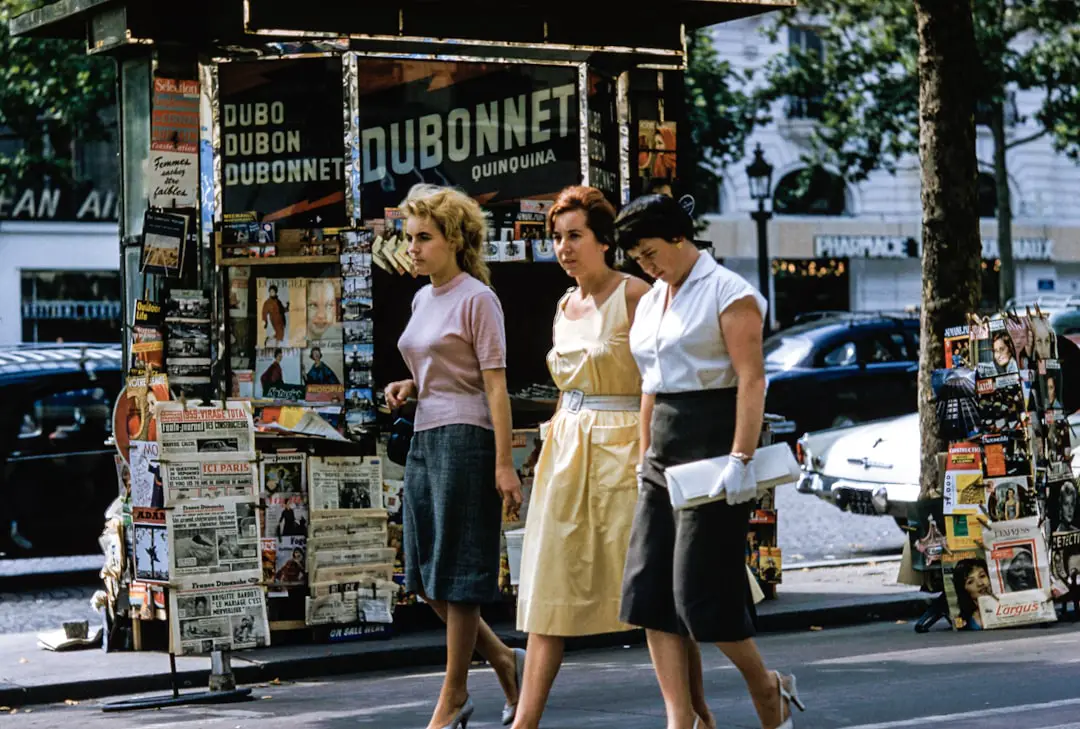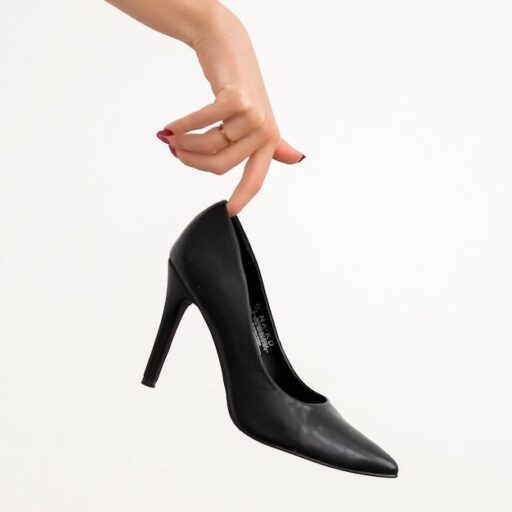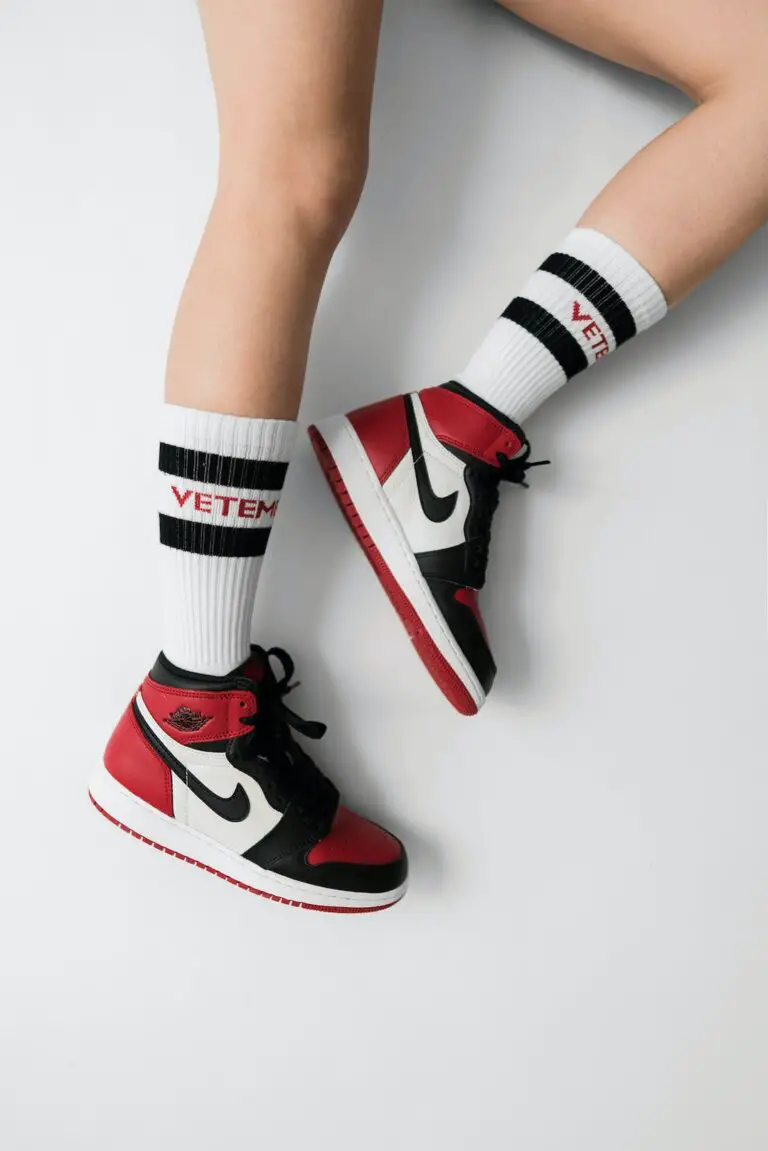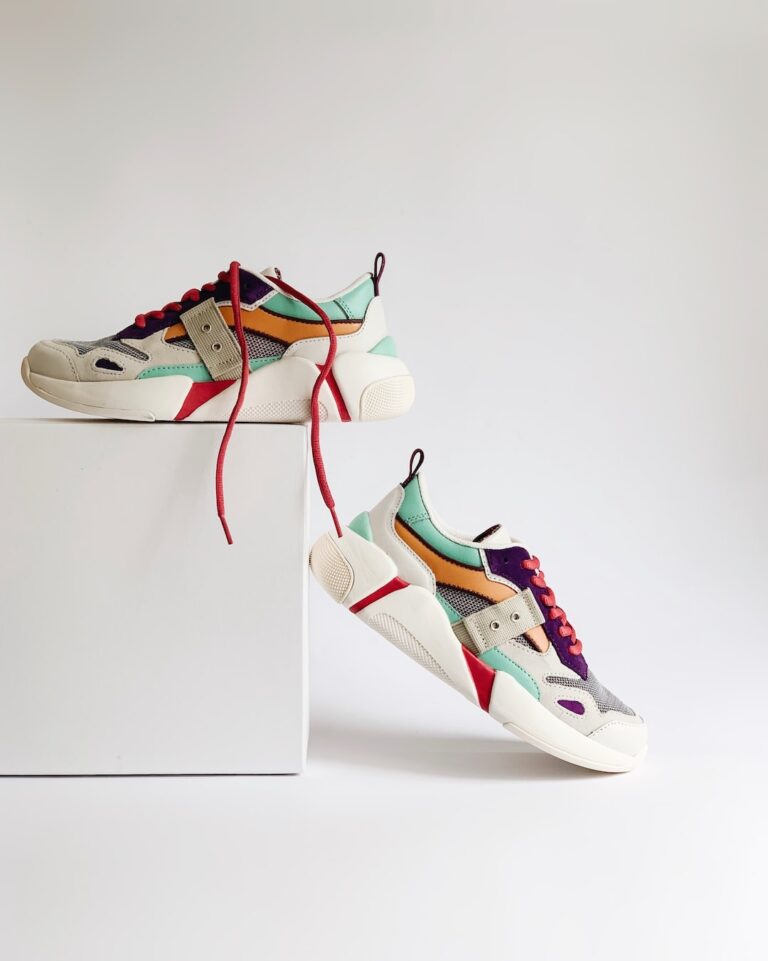Support our educational content for free when you purchase through links on our site. Learn more
A Sneaker Story: 10 Milestones That Shaped Footwear History [2024] 👟
From humble canvas shoes to high-tech masterpieces, sneakers have had a wild ride! 🤯 We’re diving deep into the history of sneakers, tracing their evolution from practical footwear to global fashion icons.
Imagine a world without sneakers. Scary, right? We wouldn’t have the comfy, versatile kicks we wear every day. 🏀🎧 But this isn’t just a story of comfy shoes—it’s a journey through innovation, culture, and style. Join us as we explore the incredible journey of sneakers, discovering the people, the moments, and the trends that shaped their legacy. ✨👟
Quick Answer
Here’s a quick rundown of the key moments you’ll want to keep in mind:
- 1839: The invention of vulcanized rubber was the game-changer that made mass-produced rubber-soled footwear a reality.
- 1876: The first rubber-soled shoes hit the scene, marketed for athletic activities. They were called “plimsolls”, and they were the ancestors of the modern sneaker. 👣
- 1916: Keds, the world’s first “official” sneaker was born, leading the way for a new era of footwear.
- 1970s and 1980s: Sneakers became a fashion craze with the rise of iconic brands like Nike and Adidas and influential celebrity endorsements. 🎤⛹️♂️
- Today: The sneaker industry is a global phenomenon, with innovation, technology, and sustainability driving further progress.
👉 Shop iconic sneaker brands now:
- Nike: Amazon| Walmart| Nike Official Website
- Adidas: Amazon| Walmart| Adidas Official Website
- Keds: Amazon| Walmart| Keds Official Website
- Converse: Amazon| Walmart| Converse Official Website
- Puma: Amazon| Walmart| Puma Official Website
Ready to dive into the story? Let’s go!
Table of Contents
- Quick Tips and Facts
- The Birth of the Sneaker: A History of Early Footwear
- From Canvas to Rubber: The Evolution of Sneaker Materials
- The Rise of the Sneaker: From Practicality to Fashion Statement
- Sneakers and the World Wars: A Time of Innovation and Utility
- The Golden Age of Sneaker Culture: The 1970s and 1980s
- The Sneaker Industry Today: A Global Phenomenon
- The Future of Sneakers: What’s Next?
- Conclusion
- Recommended Links
- FAQ
- Reference Links
Quick Tips and Facts
Let’s face it, sneakers are more than just shoes; they’re a statement, a symbol, a cultural touchstone. 💪👟 They’ve evolved from humble beginnings to a global phenomenon, shaping fashion trends and fueling a multi-billion dollar market. ✨💰
Want to know a fun fact? 🤯 The word “sneaker” itself came about because of the quiet rubber soles!🤫 Imagine that! You could sneak up on anyone without making a sound. 👻👟
We’re going to take a trip down memory lane and explore the incredible journey of sneakers, covering everything from their humble origins to their future possibilities. Buckle up, it’s going to be a wild ride! 💨🚀
The Birth of the Sneaker: A History of Early Footwear

The story of sneakers starts with the humble “plimsoll”, born in the 19th century. 🕰️ They were simple canvas shoes with rubber soles, designed for comfort and practicality. 👣😄
Before the term “sneaker” was coined, these shoes were called “beach shoes,” “plimsolls,” or even “tennis shoes” – reflecting their early uses. 🎾🏖️
1839: The invention of vulcanized rubber by Charles Goodyear, paved the way for mass-produced rubber-soled footwear. This game-changer led to the “beach shoes” becoming more accessible and popular.
1876: The New Liverpool Rubber Company in England released the world’s first rubber-soled shoes, marketed for athletic activities! 🤸🏻♀️They were nicknamed “plimsolls” because of their resemblance to the reference mark painted on a ship’s hull. 🚢
Early Footwear Innovations
1850s: The first “track spikes” or “cleats” were released, made from lightweight leather with spikes to improve grip on dirt and cinder surfaces. 🏃🏽♂️ This marked the beginning of specialized athletic footwear!
1887: The term “sneaker” first appeared in an article in the Boston Journal of Education, referring to children who could sneak up on teachers thanks to their shoes’ soft soles. 🤫 This is where the term “sneakers” stuck, and it became the popular name for rubber-soled shoes.
1916: The U.S. Rubber Company introduced Keds, the world’s first “official” sneakers. Designed for comfort and durability, they were known for their iconic canvas uppers and rubber soles. 👉 CHECK PRICE on: Keds: Amazon| Walmart| Keds Official Website
1917: Converse released its All Star sneaker, initially intended for basketball. 🏀 They featured a rubber sole and a high-top canvas upper for support, making them a hit in the athletic world. 👉 CHECK PRICE on: Converse: Amazon| Walmart| Converse Official Website
From Canvas to Rubber: The Evolution of Sneaker Materials
The materials used in sneakers have evolved remarkably over the years, driving innovation and enhancing performance. 🔬👠
A Material Revolution
Early Era: Sneakers were mainly made of cotton canvas for the upper and rubber for the sole.
The 1920s: Leather, a more durable and supportive material, began to be used in the uppers of sneakers. This proved to be a game-changer for performance-focused footwear, particularly in sports like basketball and running. 🏀🏃🏽♀️
The 1940s: Synthetic materials like nylon and polyester were introduced, revolutionizing sneaker production. They offered increased durability and water resistance, opening doors for more advanced designs and functionalities.
The 1970s: Nike, with its innovative use of air-cushioned soles, established new frontiers in sneaker technology. The Nike Air Max 1, released in 1987, became a groundbreaking design, showcasing the power of visible air technology.
Today: We see a blend of materials used for style and performance. From mesh for breathability to genuine leather for luxury, the evolution of materials continues to shape the look and feel of sneakers. 🤩
The Rise of the Sneaker: From Practicality to Fashion Statement
The story of the sneaker isn’t just about materials—it’s about how they’ve become a cultural phenomenon, transitioning from practical footwear to powerful fashion statements. 💃👟
Beyond Sports
Sneakers emerged from the world of sports, but their appeal soon extended beyond the playing field. It happened gradually—from the 1950s, when Converse Jack Purcell sneakers became a symbol of cool among rebels and alternative subcultures, to the 1960s, when Adidas Superstars found their way onto the streets, reflecting a growing urban trend.
The Endorsement Surge and Roots of Sneaker Culture
The 1970s saw the rise of celebrity endorsements. Converse, Adidas, and Puma began collaborating with iconic athletes like Chuck Taylor, Stan Smith, and Pelé—effectively connecting their sneakers to pop culture and fueling the growing sneaker culture. 👟🏆
The 1980s marked a pivotal moment in the sneaker industry. Michael Jordan’s partnership with Nike led to the legendary Air Jordan line, which became a symbol of athletic greatness and style. 🏀👑 While initially met with some controversy due to its bold colorway (black and red, breaking NBA rules!), the Air Jordan line soon became a global sensation, cementing the power of brand endorsements and paving the way for the sneakerhead craze.
It wasn’t just athletes who fueled this trend. The 1980s also saw the rise of Run-DMC, a hip-hop group that famously championed Adidas Superstars in the song “My Adidas.” 🎉🎤 This song took sneaker culture to new heights, solidifying the place of sneakers as a fashion staple beyond athletic circles.
The 1990s: The rise of skateboarding culture further amplified the sneaker trend, with Vans and DC Shoes becoming popular choices among skaters, celebrating their durable and stylish features. 🛹
Today: Sneakers are a multi-billion dollar industry, influencing everything from fashion trends to social media marketing.
Sneakers and the World Wars: A Time of Innovation and Utility
The World Wars played a significant role in the development of sneakers. Wartime demands, coupled with innovations in materials and manufacturing processes shaped the future of the footwear industry. 🪖👟
The Impact of Conflict
During World War I, the need for lightweight and durable footwear for soldiers on the battlefield led to advancements in rubber soles and canvas uppers.
World War II brought further innovation, pushing the boundaries of material science further. Converse, for instance, thrived during this period, supplying the U.S. Army with their iconic Chuck Taylor All-Star sneakers, which proved to be a perfect fit for soldiers, offering comfort and durability even under challenging conditions.
A Legacy of Transformation
The wars had a lasting impact on the sneaker industry. They propelled advancements in technology, materials, and manufacturing processes, which in turn would shape the future of sneakers and their growing popularity.
The Golden Age of Sneaker Culture: The 1970s and 1980s
The 1970s and 1980s marked a golden age for sneaker culture. These decades witnessed the perfect storm of innovation, celebrity endorsements, and growing awareness of sneakers as fashion statements. 💫👟
A Time of Innovation
The 1970s witnessed the birth of Nike’s Air technology, which revolutionized running shoes with its lightweight and ultra-cushioned design. This period saw the development of the iconic Air Force 1, the first sneaker to incorporate the air technology, which later became a symbol of street style.👟
Nike’s “swoosh” logo, designed in 1971, solidified the brand’s path to global success.
Celebrity Power
The 1980s saw Nike conquer the market with its Air Jordan line and their iconic “Just Do It” slogan. 🏀 This era was defined by impactful endorsements with basketball stars like Michael Jordan and Kareem Abdul-Jabbar and hip-hop artists like Run-DMC. 🎤
Style Meets Performance
The 1970s and 1980s marked a period when sneakers transcended their athletic roots and became powerful fashion statements. The lines between athletic footwear and casual wear blurred, leading to a cultural shift that continues to shape sneaker trends today.
The Sneaker Industry Today: A Global Phenomenon
The sneaker industry today is a global phenomenon. It’s a multi-billion dollar market fueled by innovation, technology, and the ever-growing demand for stylish and comfortable footwear. 🤯👟
More Than Just Shoes
Sneakers have become a cultural force, shaping trends across various demographics, from streetwear enthusiasts to high-fashion designers. They’re a powerful symbol of individuality, allowing people to express themselves through a variety of styles, colors, and brands.
The Rise of the Resale Market
The sneaker resale market has exploded in recent years, fueled by the limited-edition releases of sought-after sneakers and the growing demand for rare and collectible footwear. 📈
The resale market has become a lucrative industry in itself, generating billions of dollars annually. This trend showcases the significant cultural value attached to sneakers and the increasing demand within the sneaker community.
The Role of Technology
Technology plays a crucial role in the sneaker industry. From 3D printing, which allows for the creation of custom-designed sneakers with enhanced features, to smart sneakers with embedded technology that monitors fitness data, the future of sneakers is exciting and promising.
Sustainability and Ethics
As consumers increasingly prioritize ethical and sustainable practices, major sneaker brands are incorporating recycled materials and promoting environmental-friendly initiatives. They are committed to reducing their environmental footprint and promoting responsible production practices. 🌎
The Future of Sneakers: What’s Next?
The future of sneakers looks bright! There are exciting advancements on the horizon, promising a blend of technology, style, and sustainability.
Innovation at Its Finest
- Smart technology: We can expect the integration of smart sensors, GPS tracking, and data analytics into sneakers, further enhancing performance and transforming the way we experience athletic footwear.
- Personalized design: 3D printing will continue to revolutionize sneaker customization, allowing for unique designs and tailored fits, enabling a greater sense of personalization.
- Sustainable materials: The growing demand for sustainable products will drive innovation in materials science, leading to the use of recycled materials, vegan options, and bio-based materials. 🌱
The Future Is Now
The sneaker market is a constantly evolving landscape, and we can expect to see new designs and technologies emerge that blur the lines between performance, style, and functionality.
Conclusion

From humble beginnings as functional footwear, sneakers have transcended practicality to become a global phenomenon, influencing fashion, culture, and even technology. They tell a story of unwavering innovation, capturing the essence of athletic prowess, personal style, and cultural expression. 🎉👟
As we’ve journeyed through the history of sneakers, we’ve seen how they’ve evolved with the times, reflecting societal shifts, trends, and technological advancements. They’ve become a powerful statement, allowing individuals to express themselves and connect with others through a shared passion for footwear.
The future looks bright for sneakers, filled with possibilities and exciting innovations. With ongoing advancements in technology, material science, and design, sneakers promise to continue to shape the way we move, express ourselves, and connect with the world around us. 🌎💪
Recommended Links
👉 Shop Sneakers Now:
- Keds: Amazon| Walmart| Keds Official Website
- Converse: Amazon| Walmart| Converse Official Website
- Nike: Amazon| Walmart| Nike Official Website
- Adidas: Amazon| Walmart| Adidas Official Website
- Puma: Amazon| Walmart| Puma Official Website
- Vans: Amazon| Walmart| Vans Official Website
- New Balance: Amazon| Walmart| New Balance Official Website
Read More About Sneakers:
- Sneakers: A Cultural History by Adam Hepburn: Amazon
- Kicked: The History of Sneakers by Adam Bamford: Amazon
FAQ

When were sneakers first invented?
The world’s first rubber-soled shoes were released in 1876, by the New Liverpool Rubber Company in England. 👟 They were marketed for athletic activities and nicknamed “plimsolls” due to their resemblance to the reference mark on a ship’s hull. 🚢
What were they called before “sneakers”?
Before the term “sneaker” was coined, these shoes were called “beach shoes,” “plimsolls,” or even “tennis shoes” – reflecting their early uses. 🎾🏖️
What is the story behind sneakers?
The story of sneakers starts with the development of vulcanized rubber in 1839, which made mass-produced rubber-soled footwear possible. 🤯
This invention made it possible to create durable and comfortable shoes that were less noisy than leather footwear.
Read more about “👟 The Top 15 American Shoe Brands: From Iconic Classics to Cutting-Edge Kicks …”
When were shoes first invented?
While the history of footwear dates back thousands of years, the earliest shoes were more like sandals or primitive footwear that protected the feet. 👣
The first known shoe with a closed-toe design dates back to 3500 BC, found in an Egyptian tomb. 🏛️
How did shoes evolve over time?
Shoes have gone through a fascinating evolution, with improvements in materials, design, and functionality over the centuries.
From the simple sandals of ancient civilizations to the high-tech performance footwear of today, the story of shoes reflects technological advancements and the changing needs of people.
When did the sneaker trend start?
The sneaker trend began to gain momentum in the 1950s and 1960s.
Did sneakers have a big impact at the time?
While they were popular among athletes and some subcultures, it was the 1970s and 1980s that witnessed the true rise of sneakers as a major fashion trend.
Endorsers and marketing tactics helped sneakers become an iconic symbol of style and performance in mainstream culture.
Read more about “10 Obscure Shoe Brands That Will Change Your Footwear Game … 👟”
Reference Links
- Converse
- Adidas
- Puma
- Nike
- Keds
- Vans
- New Balance
- Charles Goodyear
- History of Footwear
- THE SNEAKER: A TIMELINE OF CULTURAL EXPR
Please remember: The sneaker industry is dynamic, constantly evolving. So keep checking back for the latest updates and trends. You can also follow us on social media for more content about shoes and fashion.


